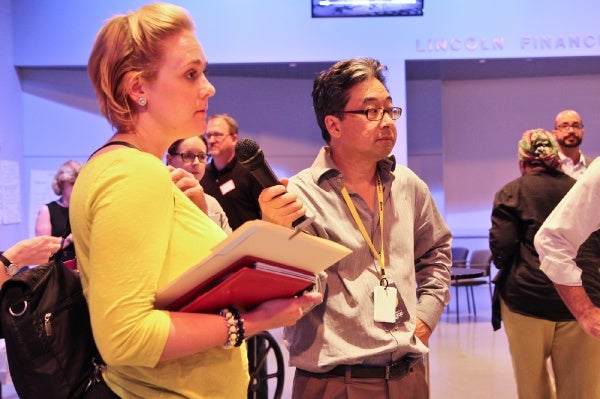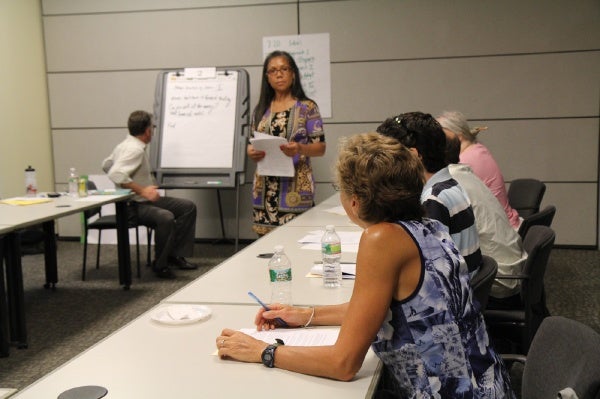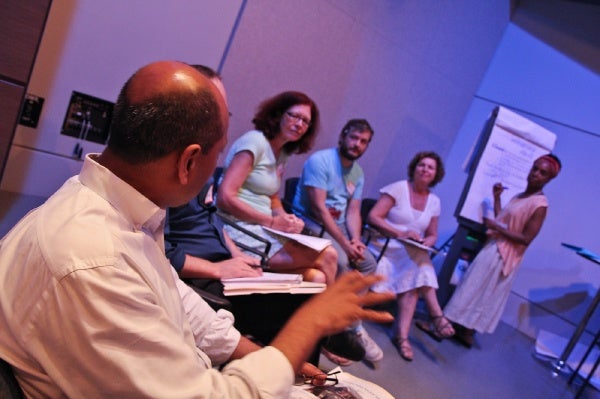Philly clinic has 20-year head start on integrating mental, physical health care
Integrating physical and mental health care is a goal of the Affordable Care Act. As the law inches into effect, health-care providers are trying to figure out what integrated services could look like. Abbottsford Falls Family Practice in the East Falls section of Philadelphia has a 20-year head start.
Creating strong relationships for better health
It’s rare to walk into a busy waiting room and find patients raving about their doctors.
“I just fell in love in love with them,” said patient Margaret Elam, “because they all were like family.”
Other patients at the clinic were equally enthusiastic.
Rosetta Bell enjoys the comprehensive care she says she gets here. “You don’t come in here, and they write you prescription and you go,” she explained. “They always want to know what’s going on with you, how you are feeling, how your family is doing.”
Judy Levine first visited after her arthritis made it impossible for her to work, and she felt completely lost. She still comes here now, years later. “They care about my well-being and I feel cared for,” she said.
The rave reviews may even be more surprising because this is a public health clinic, mostly serving people who live in nearby public housing. Some of them don’t have insurance, but many have chronic health problems, such as diabetes, heart disease, depression.
Nurse and clinic director Donna Torrisi says integrating care is the only way to manage her patients’ complicated health needs.
“If we’re not taking care of their anxiety, or their depression, or their insomnia, they’re not going to be able to take care of their diabetes or their asthma,” she explained. “You just don’t have the mental energy to take care of such daunting physical problems if you’re struggling with emotional issues.”
Founded in 1992, the clinic is part of the multi-site Family Practice & Counseling Network. From the start, Torrisi pursued a vision of integrated care.
Addressing knee pain — and insomnia — in one setting
Behavioral health consultants work with nurse practitioners as they examine patients. Therapist Susan Bash listens as patients list complaints; they might start with knee pain, but it doesn’t end there.
“So let’s say it came out, in addition to your knee pain, you’re also dealing with insomnia, you have stress. I will explore what’s going on that’s contributing to your insomnia,” she said.
But her offer of help isn’t always met with open arms. “Some people are just not ready, so I try not to bombard people with services here,” she explained. “I try to show that we are accessible whenever people are interested and ready for the help.”
Challenges, benefits of comprehensive approach and shared space
Putting the many pieces of health care together in a way that works is tough. It demands that the staff embrace flexibility and continuous evaluation. Logistics can be a challenge, said staff member Tracy Weant.
“I think flow in the primary-care physical space has been something to continually problem solve — who goes in the room first, the technicalities of the flow,” Weant said.
Offering a smorgasbord of care options is convenient, but can have unintended side effects — especially when many patients know one another.
“It’s a close community, and people didn’t want others to know that they were getting behavioral health care,” explained clinic psychiatrist Amy Brodkey. She has been at the clinic since 1997, and says this integrated care model has helped decrease that stigma.
Brodkey says another plus is that different health professionals can actually talk to each other, sharing what they are seeing in their patients.
“Because we’re in close quarters, we see each other a lot, and that gives patients a sense that we’re all looking out for them,” she said.
Clinic director Torrisi and her staff have spoken at conferences on the integrated model, and Torrisi says she offers people in the often frustrating field of primary care a hopeful message.
“The more we work together as a multidisciplinary team, the more gratifying working in primary care is,” she said. “Health care really is about multidisciplinary care. I mean, as a nurse, I would never say I can do it all, any more than I would say a physician can do it all.”
One Abbottsford patient summed up why Torrisi believes the hard work of integrating the often scattered pieces of health care is worth it. Stanley Elam has diabetes and high blood pressure. He’s battled addiction, and he’s lost two children. Sitting in the waiting room, he said, “I’m still here, because of this place.”
WHYY is your source for fact-based, in-depth journalism and information. As a nonprofit organization, we rely on financial support from readers like you. Please give today.














